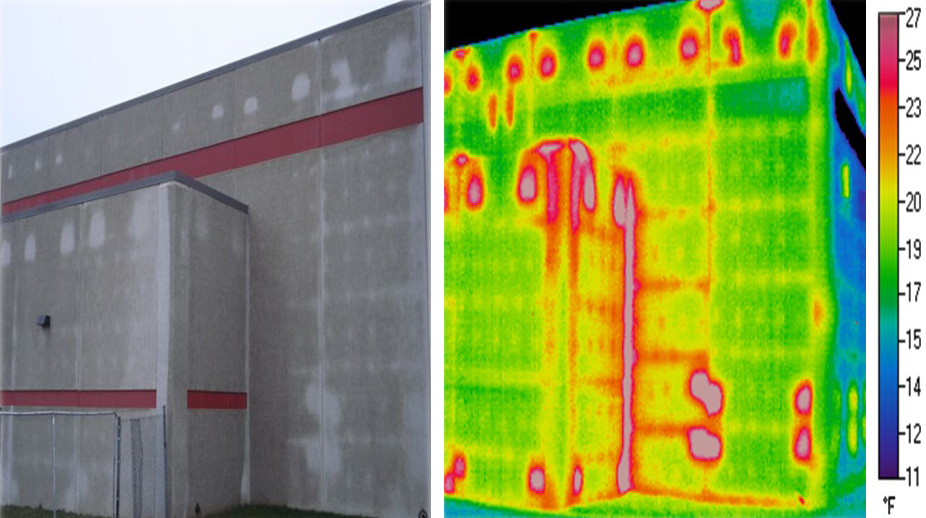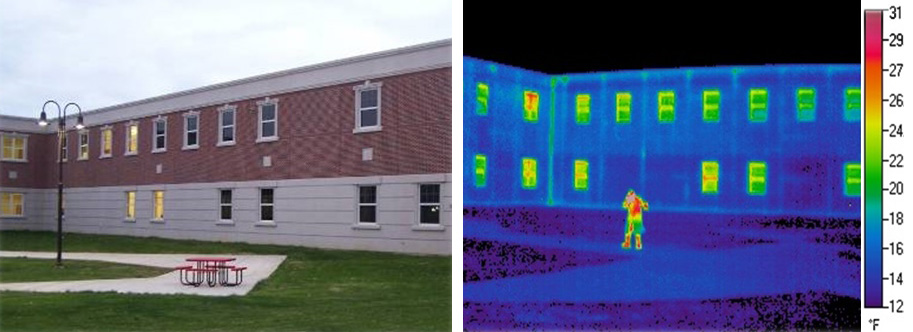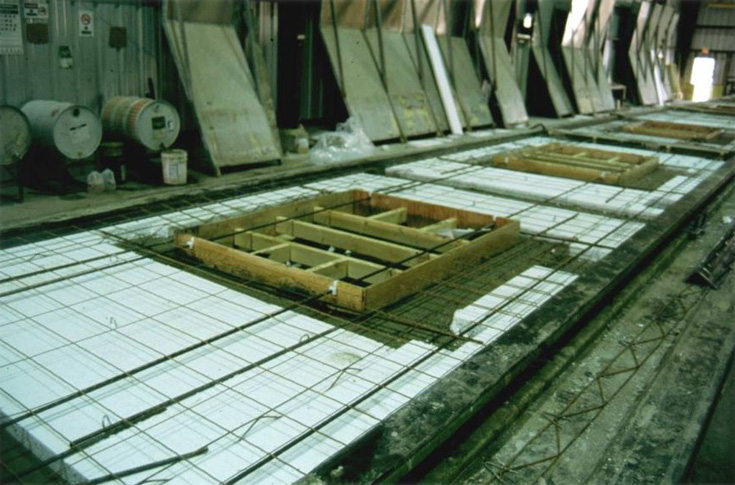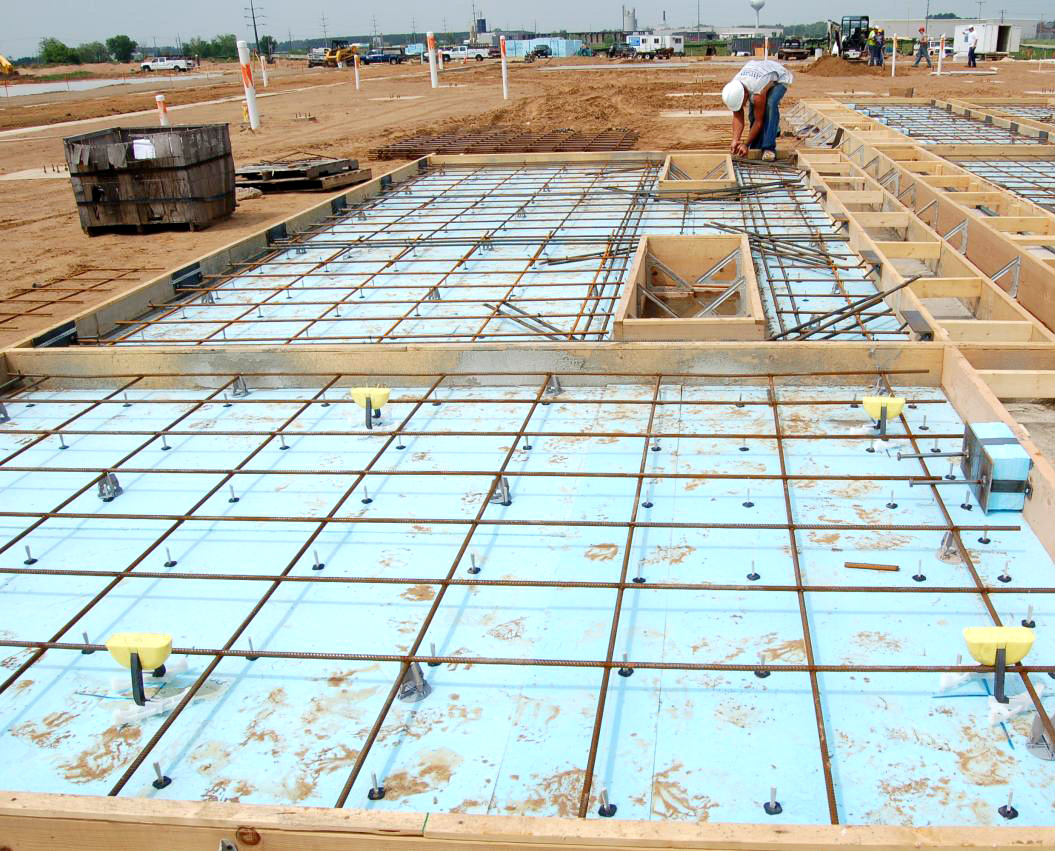Enormous Energy Savings
Concrete has excellent thermal properties, and when combined with “sandwich panel” tilt-up construction, it can offer solutions to cold climate construction. Our sandwich panels have added advantages when developing buildings that require environmental control, such as cold storage amenities and high-technology facilities.
Insulated tilt-up is a much tighter building system than traditional methods. For example, an R16 tilt-up panel system will perform as well as if not better than an R32 low-mass construction system thanks to non-conductive thermal bridging, 3-inch thick insulation and the thermal mass of the concrete.
C.E. Doyle’s concrete buildings offer an overall energy and life cycle performance that is typically 40-75% more efficient than non-tilt-up buildings.
Thermal efficiency comparison
The illustration below shows a winter heat loss comparison between a typical precast concrete wall system versus a C.E. Doyle concrete wall panel. Red and yellow indicate heat loss and air movement, respectively.


Conductive thermal ties
Traditional steel ties and solid concrete sections allow heat to be transmitted through the wall, resulting in elevated energy costs.

Non-conductive thermal ties
C.E. Doyle’s system utilizes Thermomass non-conductive wall ties and, therefore, do not transmit this energy through the wall.
